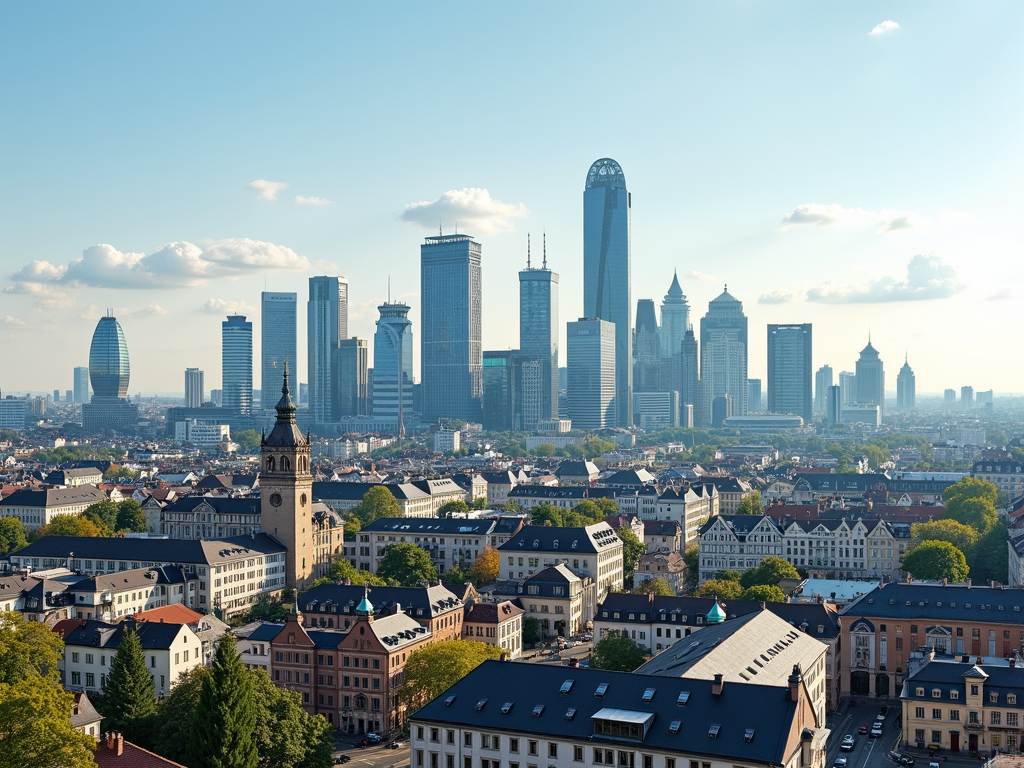Real estate prices in Germany are a hot topic for investors and individuals alike. While prices have shown slight fluctuations in recent months, the market in urban areas remains robust. This article highlights regional differences and global factors influencing price trends. It examines how metropolises compare to rural areas and what role political events play. These insights provide a solid foundation for investment decisions.
Regional Dynamics in the Real Estate Market: Urban Growth Rates and Rural Declines

Real estate prices in Germany are characterized by significant regional fluctuations. This is the result of a complex interplay of factors such as economic development, housing shortages, construction rates, and political conditions. A summary of the current situation and future expectations offers a fascinating picture.
In large metropolitan regions such as Berlin, Munich, and Frankfurt, we continue to observe rising and stable prices. These cities remain magnets for newcomers with high purchasing power, further increasing demand for real estate. For example, in Munich, new construction properties are particularly sought after, with an impressive average price of 11,253 euros per square meter. Similar developments are observed in Hamburg and Stuttgart, where prices also exceed the national average.
In contrast, peripheral areas and small urban regions show an opposite dynamic. Here, real estate prices tend to decrease due to an oversupply and weaker demand. Uncertainty in the real estate market and rising construction rates reduce the propensity to purchase in these areas. On the other hand, there are also exceptions like in Bremen-South, where real estate prices increased at the beginning of 2025, particularly for apartments and owner-occupied houses.
Forecasts indicate that by 2030, real estate prices in urban centers will continue to rise. Urbanization and population growth remain key drivers. Conversely, rural areas are expected to see a decrease in demand due to a declining population. The rising rates and construction costs play an important role, as they complicate the financing of new constructions and the purchase of real estate.
The regional development of prices is also determined by various factors: a strong economy often means higher real estate prices, as it attracts people to the region. The availability of housing, i.e., the ratio of supply to demand, is crucial. Political decisions, for example in the form of support programs or regulations, can further influence the situation.
In summary, the German real estate market is a model example of regional differences. Future prospects crucially depend on the prevailing local factors. Metropolitan regions will continue to drive growth, while rural areas face challenges related to demographic changes and economic crises.
Global and Political Influences on the Real Estate Market: Dynamics and Forecasts

Real estate markets are a complex network influenced by a multitude of external factors. Especially in the current global landscape, where geopolitical uncertainties and economic stability play a crucial role, careful observation is essential. The impact of political and economic developments extends beyond borders and leaves its mark on the European real estate market.
Geopolitical instabilities, including conflicts and changed diplomatic relations, have an immediate effect on economic security and consumer confidence. Political tensions can lead to a scarcity of investments, as market actors may hesitate to invest in volatile environments. Especially in times of increased defense spending and political uncertainties, such as those currently observed following the war in Ukraine, the dynamics of the real estate market are slowing down.
No less important are economic conditions, which enhance Germany’s attractiveness as a real estate market. Constant economic stability, supported by transparent legislative frameworks, attracts both local and international investments. This economic robustness serves as an anchor for investors who consider stability a key attribute for higher investment volumes. An example of this trend is the increase in transaction volume in the European commercial real estate market in the last quarter of 2024, due to more favorable financing conditions.
However, the downsides should not be underestimated. In rural areas, high mortgage rates lead to a decrease in real estate prices. Metropolitan areas, on the other hand, benefit from demand further fueled by housing scarcity. Despite the challenges, it is also important to highlight opportunities: the demand for properties that comply with ESG criteria and technologically advanced housing solutions is steadily increasing. The need for energy renovations and the trend towards sustainability represent potential growth areas.
By 2030, experts expect that real estate prices in major cities could increase by up to 60%, supported by continued population growth and rising demand for urban housing. At the same time, the rental market is experiencing rising prices, driven by population growth and insufficient new construction. These developments highlight the immense relevance of global and political factors that shape the real estate market. The effect of these various factors on price formation in the real estate market requires a diversified approach and underscores the need for ongoing and well-considered global investment strategies.